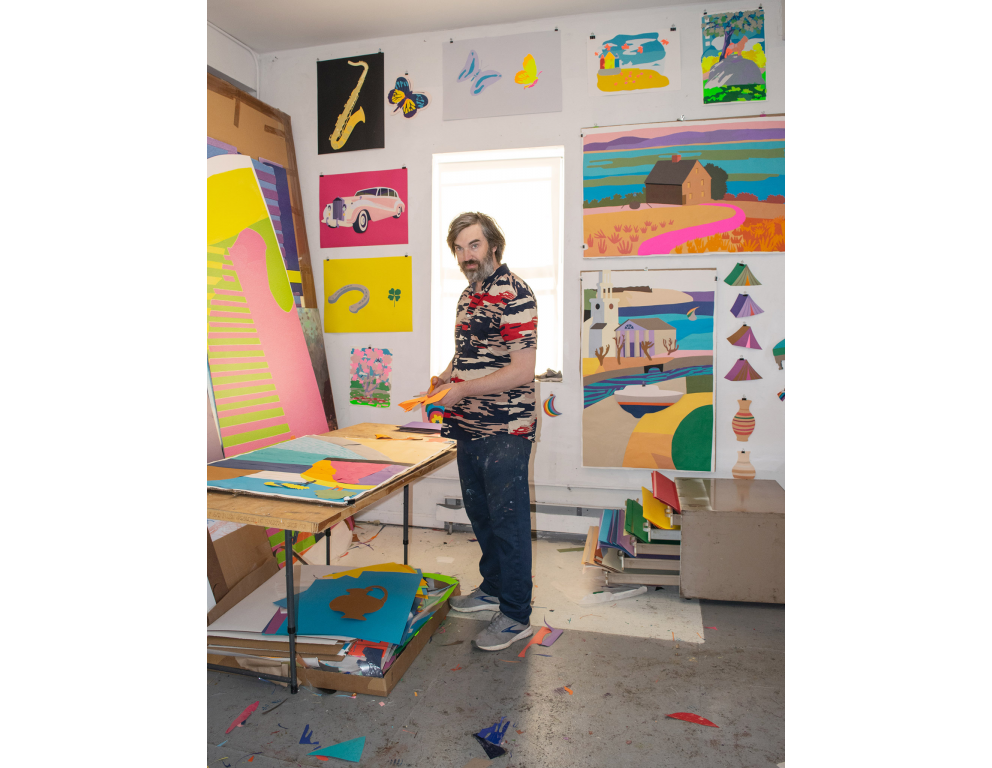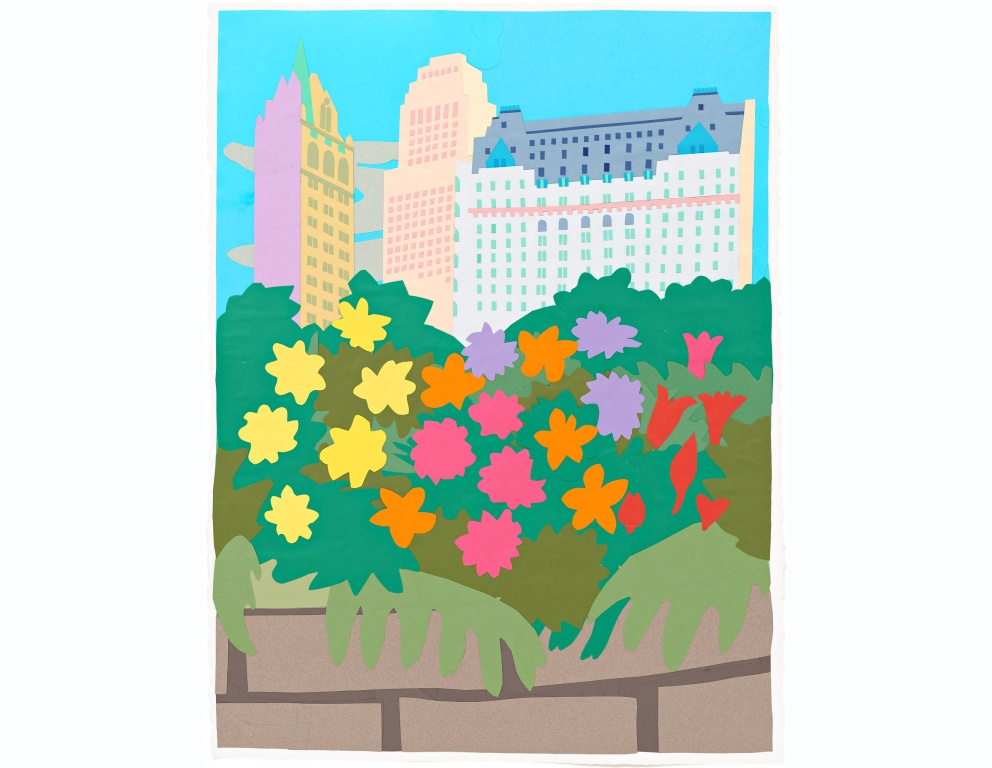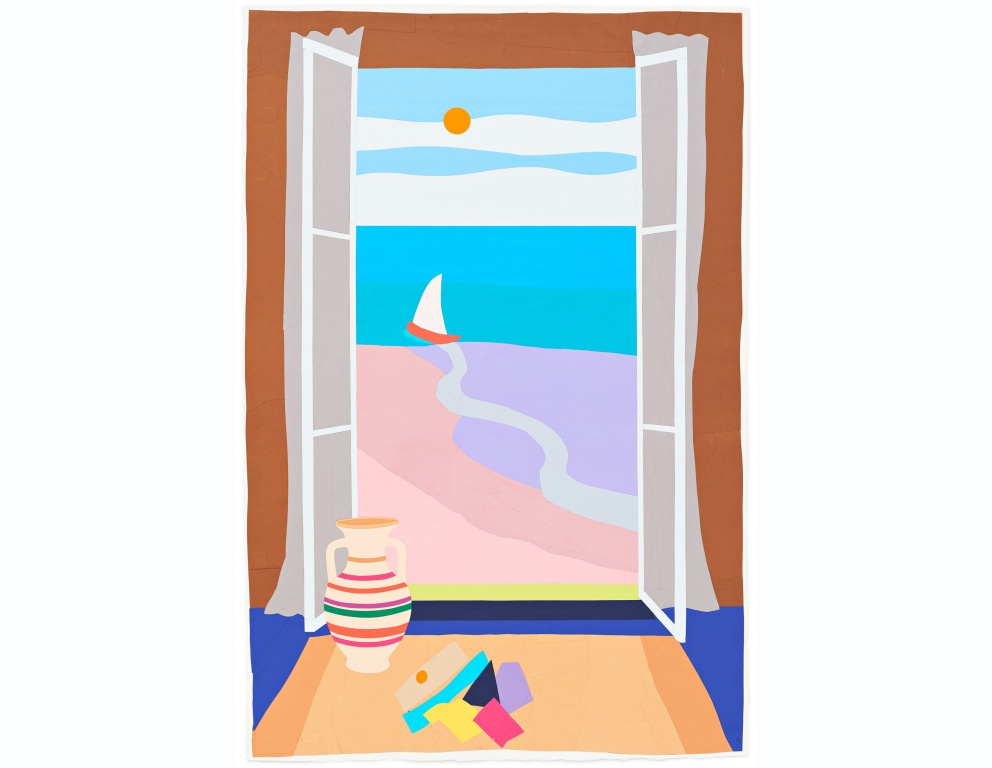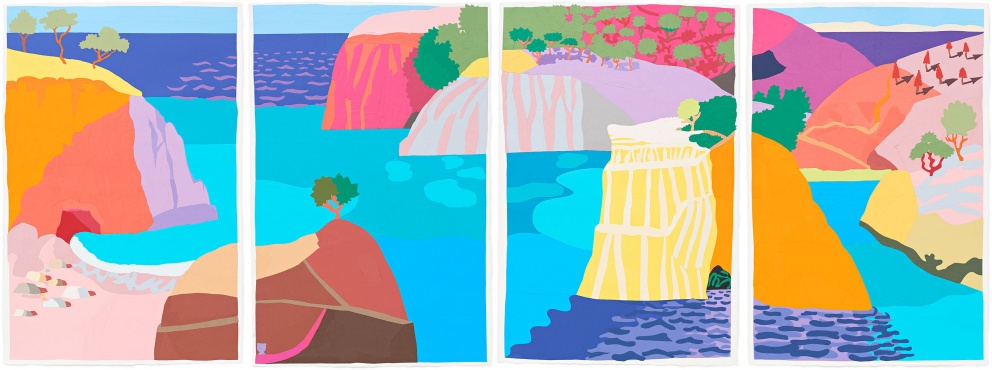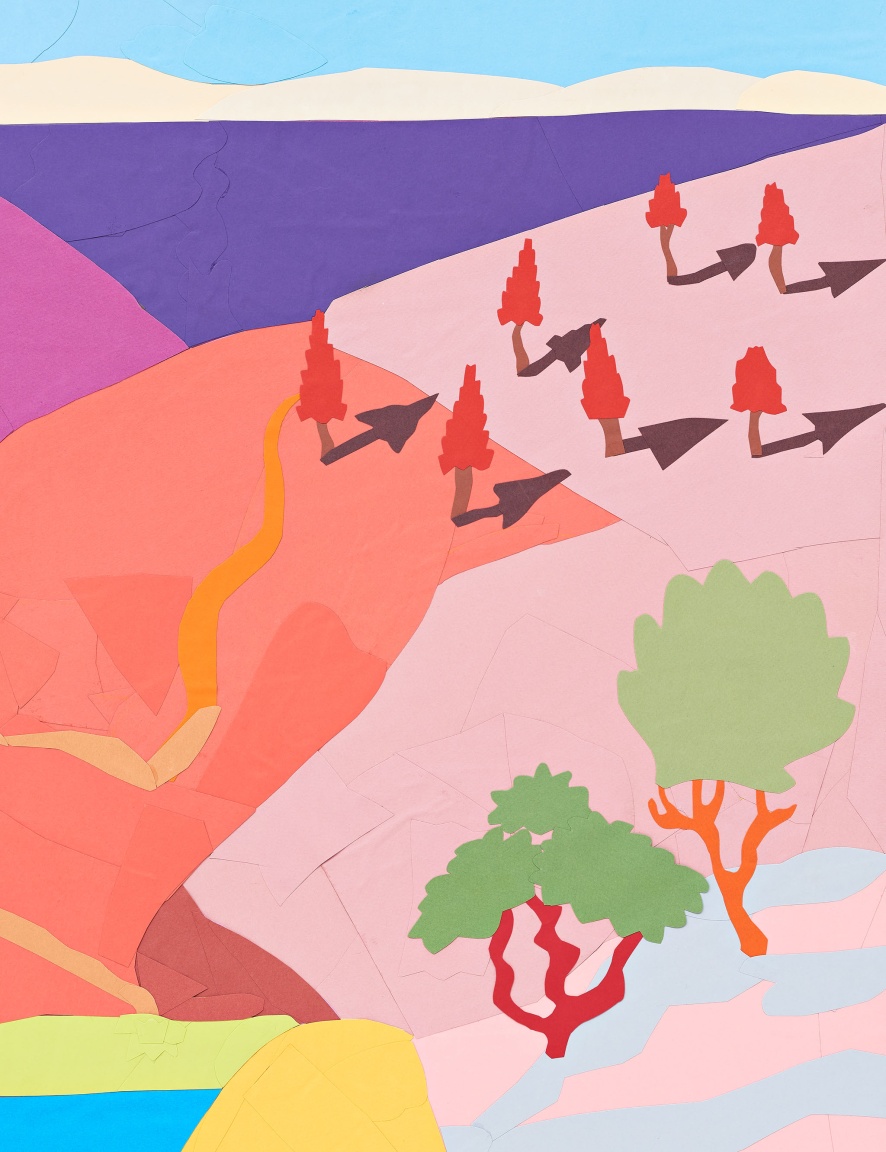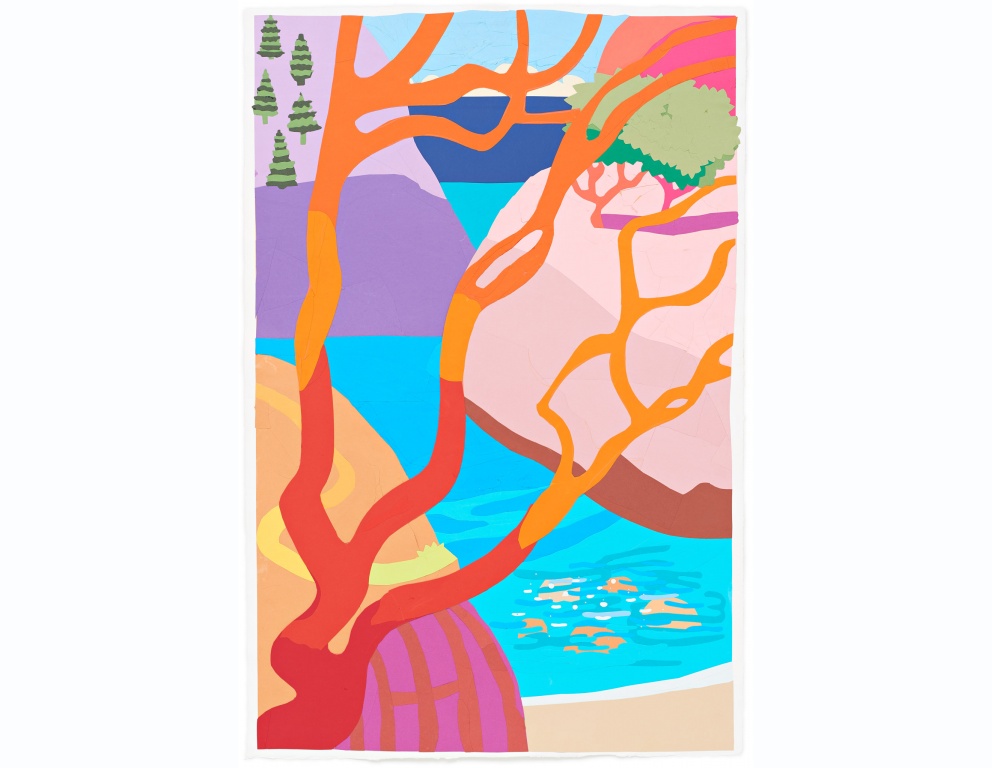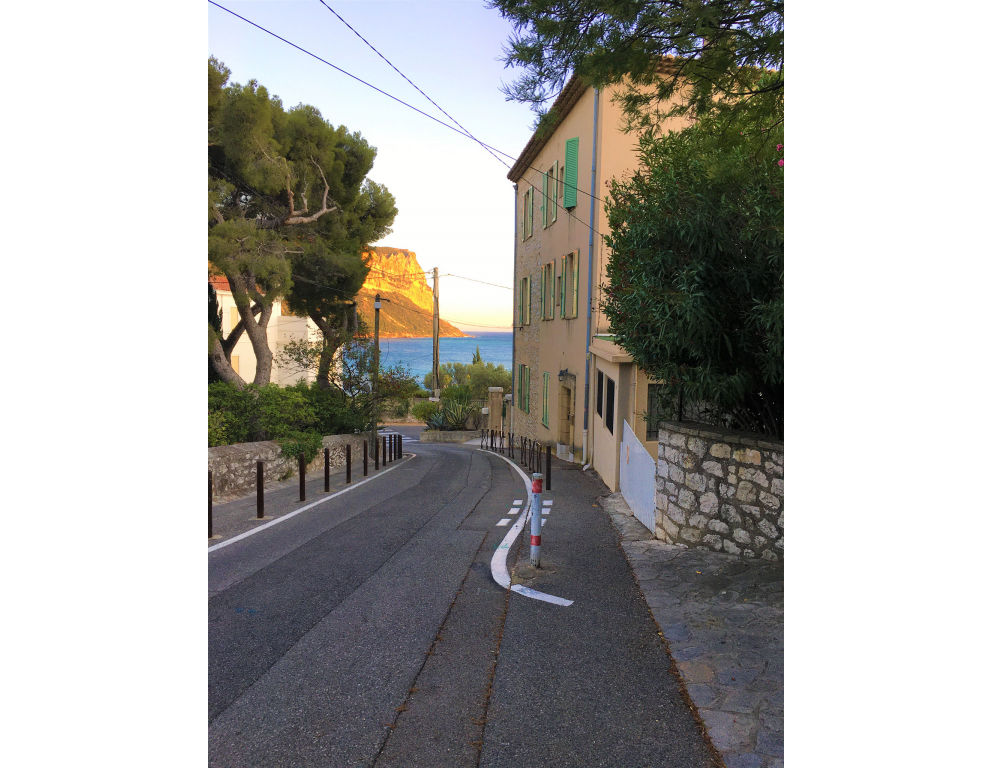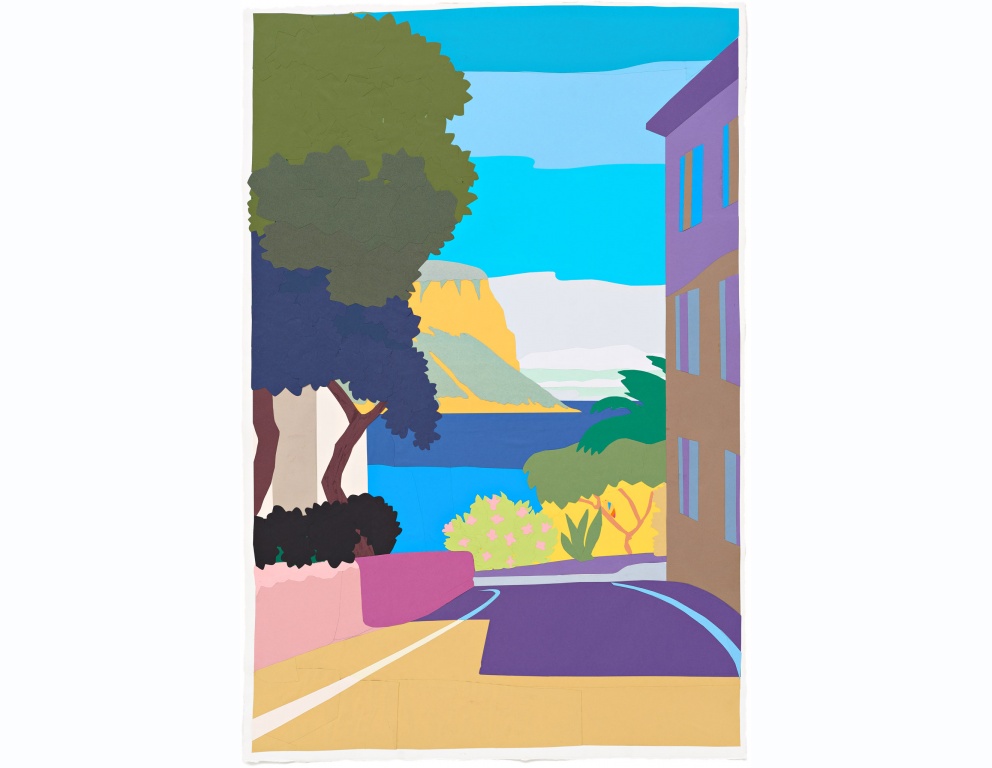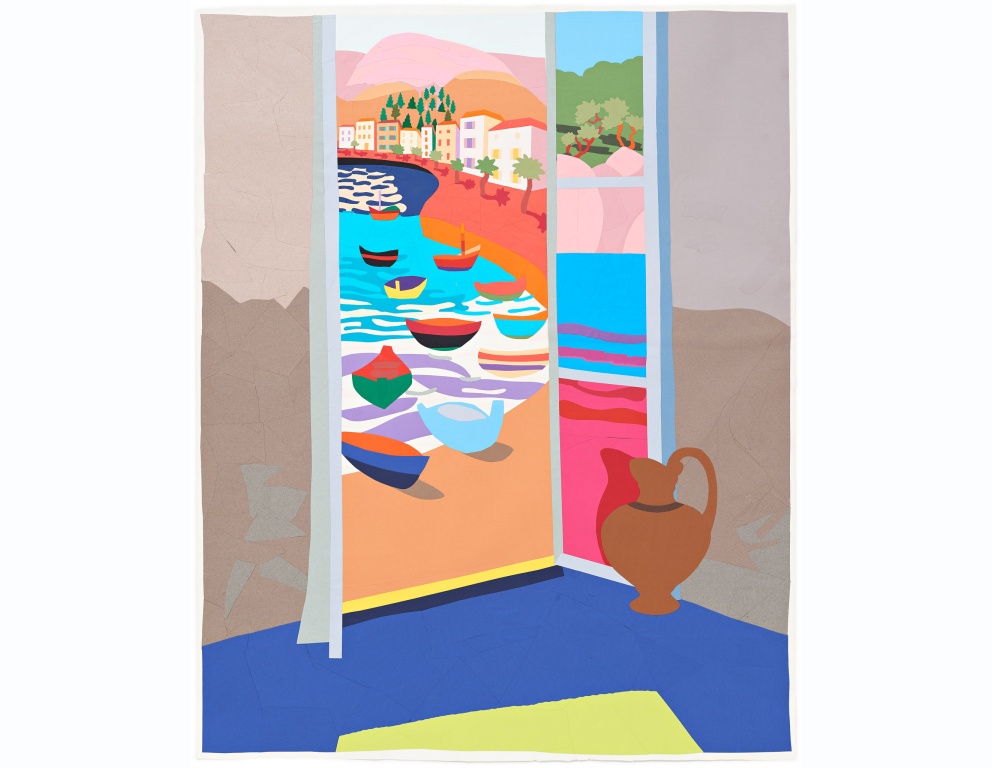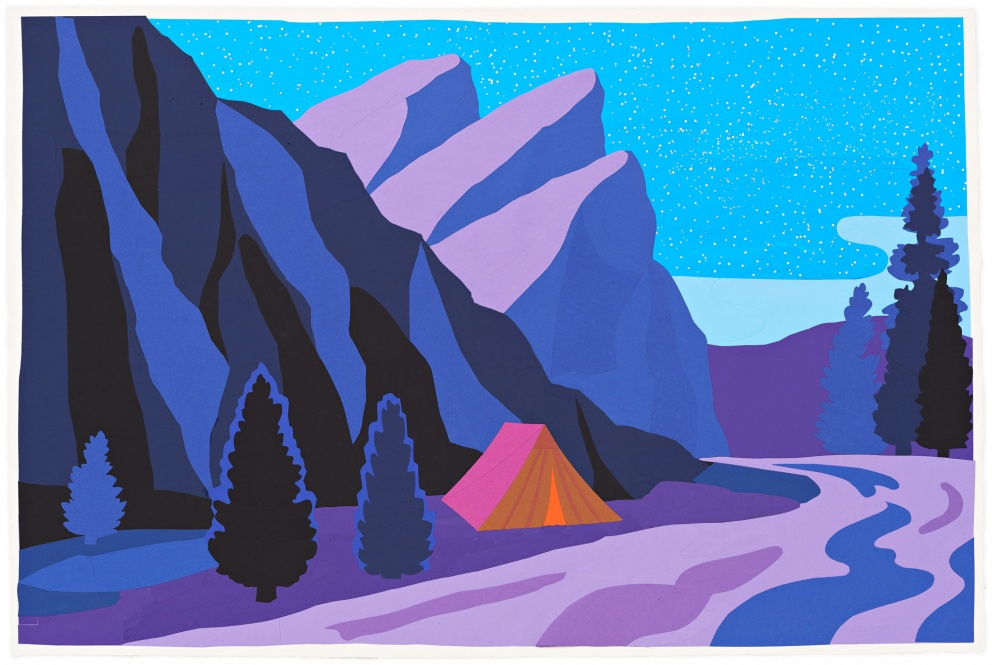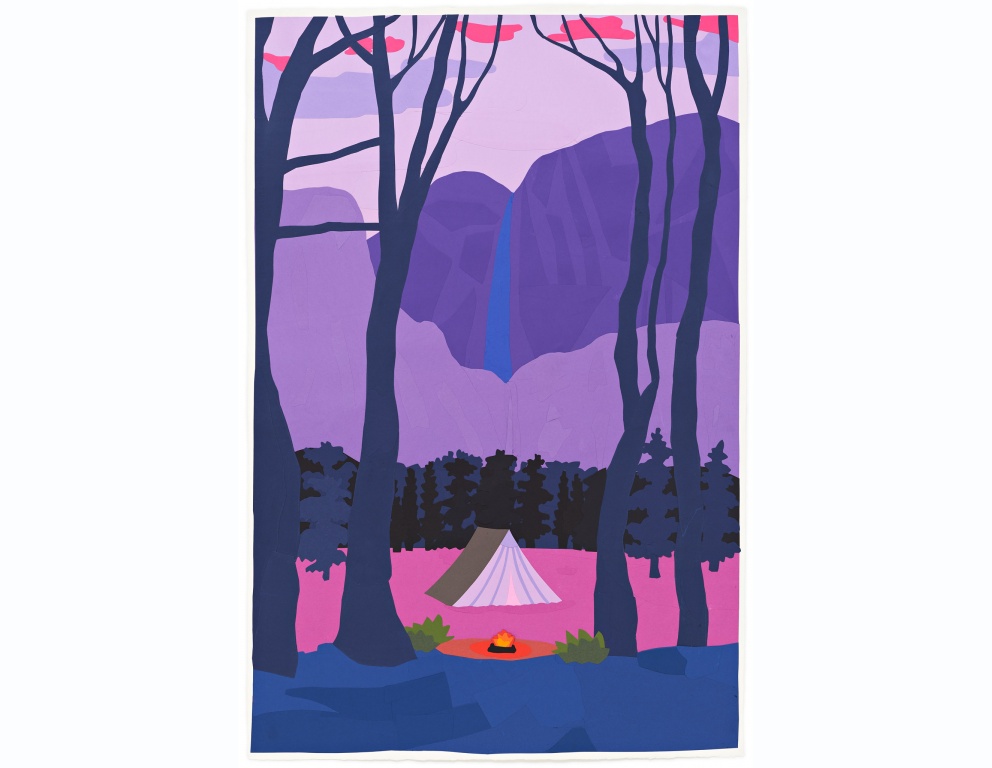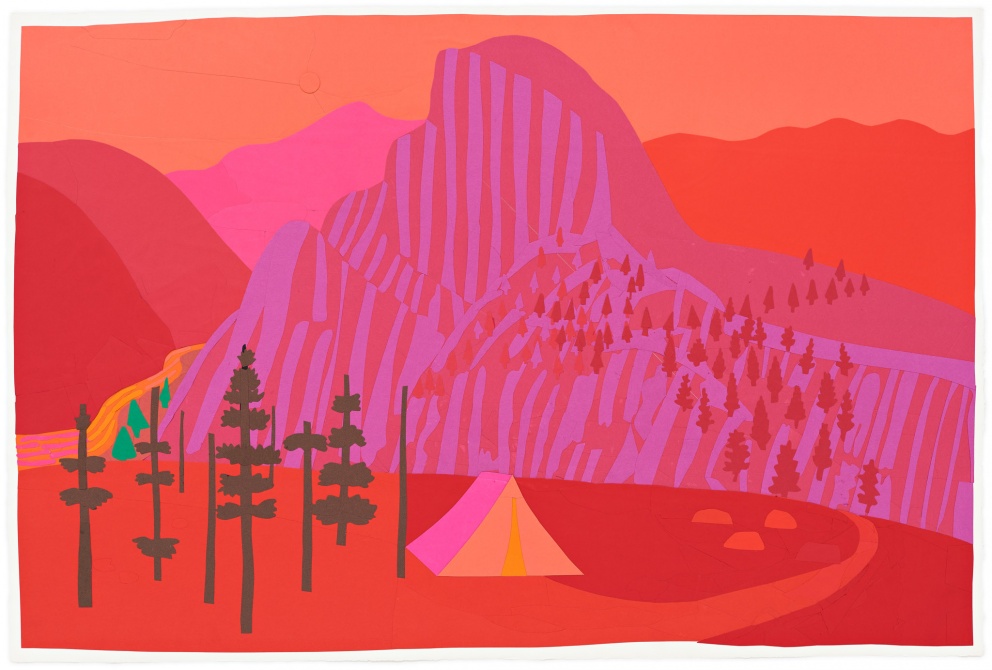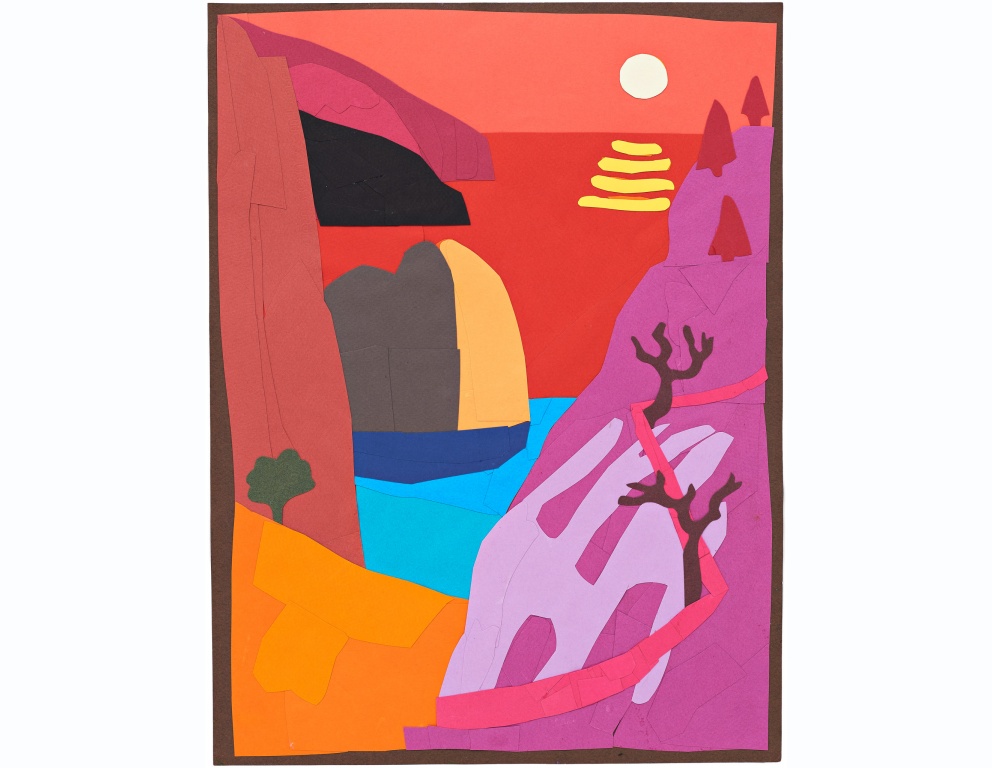The final collage from my 2017 show is the Jenga building, Leonard. By that point, I had sort of taken the hard edges of the city, and they started almost bending into surrealism or abstraction.
I returned to the cityscape a little bit in Summer Central. Picking up there, Central Park started showing me more pastoral or floral looks, and then I took it to the Riviera and Yosemite, which I think both lend themselves to abstraction: you start out with this epic landscape, but there are so many avenues and pathways to go down that you end up with these abstract shapes in interesting color combinations.
